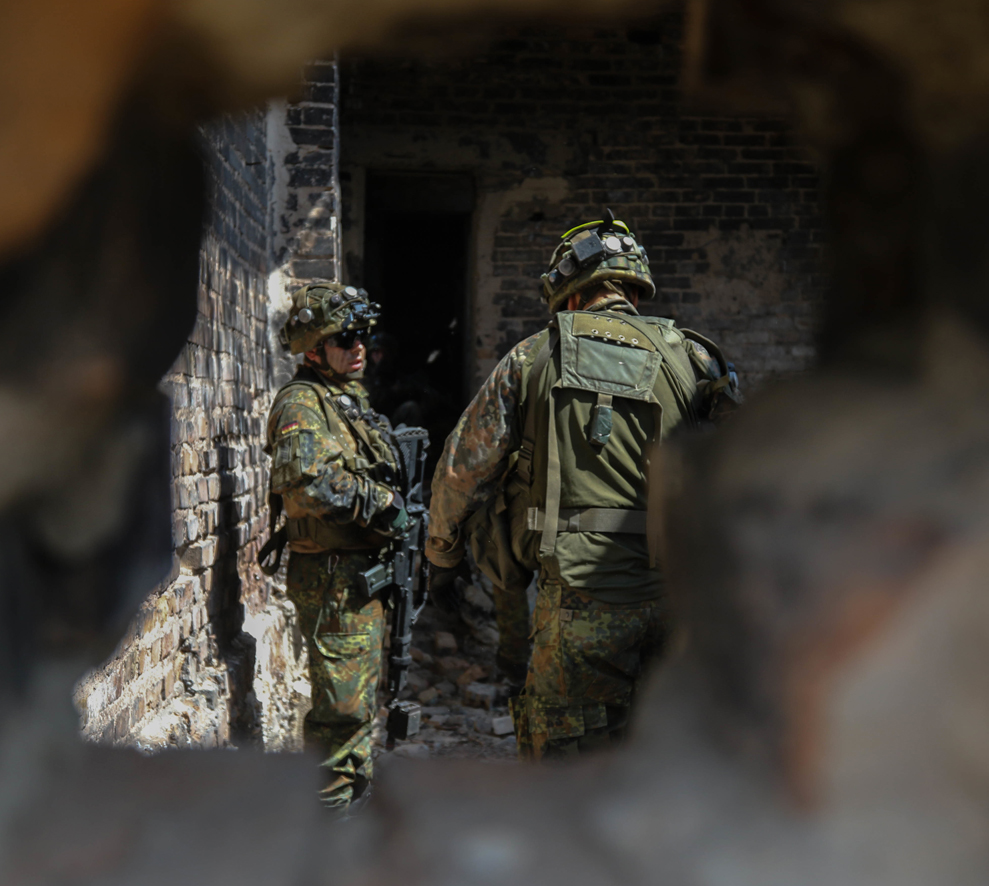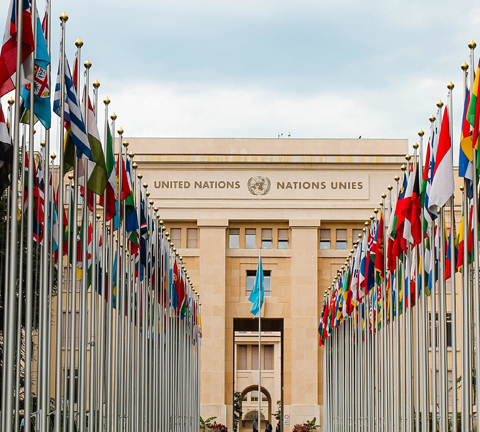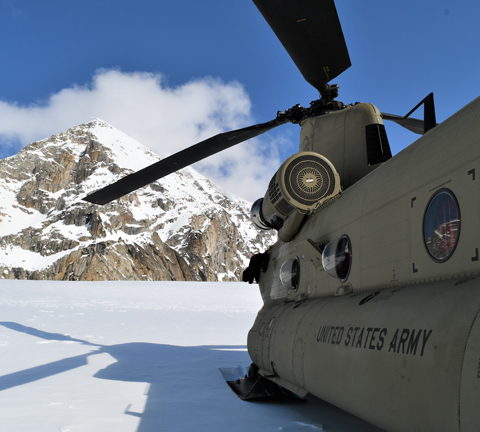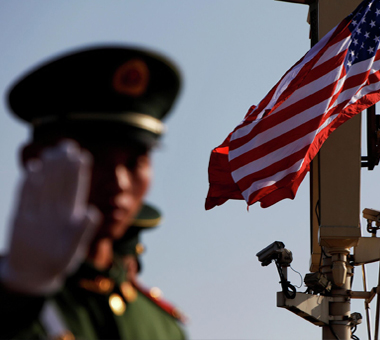In light of great powers' refusal to allow China to become the world’s strongest and most powerful pole, and if the current events do not lead us to a destructive nuclear war, the world is heading towards an automatic disintegration and division into political and economic regions.
Since the Peloponnesian War started in Greece in the fifth century BC, international relations theorists focused on relative positioning for the dominating power in front of other actors in the international system. The importance of this war lies in the fact that it is the first documented historical event by the Greek historian Thucydides, of a military clash between two powers; one is a dominating power represented in ruling and controlling Sparta, while the other is the emerging power represented in ambitious and wise Athens.
Sparta envisioned dangers that could threaten it by assuming that Athens competed for its share in the region, which led to direct conflict with it. As fear is an original trait within the human psychic, some experts believe it is enough motivation to start a war between the emerging power and the dominating one in any international system based on historical evidence.
This explains the tendency of many analyses and outlook insights towards predicting an inevitable war between the U.S. and China for the latter represents a threat to the geostrategic weight of the U.S. power. Yet, the high cost of the destruction of great scope resulting from any war between the two nuclear powers deems taking the decision to wage a nuclear war an irrational act; both parties are capable of bringing Mutual Assured Destruction (MAD).
Tariff War
Because the U.S. central mind should carefully consider neutralizing the Chinese economic threat before it turns into an explicit military threat; this supports the theory that U.S. deep circles have already decided to practice multi-leveled pressure to limit the expansion of the Chinese Dragon around the world
The Tariff War initiated by U.S. President Donald Trump between the U.S. and Chinese exports could be one of the ascending pressures that he resorted to since taking office.
On the other hand, fifth and sixth generation warfare tools became present on the international tension arena; observers have almost always linked the occurrence of a mysterious event with such tools with the aim of speculating the possible political characterization narrative of what is going on
The novel Coronavirus outbreak in China in its early stages played a role in making things more logical to some extent for those saying that this is nothing but a manufactured virus, produced by a certain party aiming at weakening China without shooting a single bullet so as to damage its fierce economic power on both short and medium ranges.
Absorbing the First Shock
Chinese success, so far, in deterring this epidemic on one hand, and the transmission of Coronavirus to west European cities and prominent U.S. economic cities like California and New York on the other, strengthened the theory that China was able to absorb the first shock, and direct the danger towards new geographical spots. Perhaps, the creators of this virus did miscalculate its scope and did not expect its ability to expand to their economic interests as well.
Accusing China of launching this virus is still a theory that is not supported by any overwhelming evidence or even supporting clues especially that the lab origin theory of this virus is still weak and refuted by many almost certain facts that it is of natural origin. Until facts are clear and the fog surrounding the post coronavirus clears, China will still have many strengths which the U.S. considers as a direct threat, such as:
Chinese Economic and Military Growth
Chinese military spending until 2018 was around $250b with an increase of 190% compared to military spending in 2008, which was about $86.3b.
This spending was accompanied with China showing an attitude that could be described as rough towards some stances, just like creating artificial military islands in the South China Sea, claiming dominant rights in this vital part of the world given the dependency of these islands on the sea. China then inaugurated, in August 2017, its first military base outside its borders; in Djibouti, one of the horns of Africa, overlooking the Gulf of Aden, to secure its shipping lines.
Over recent years, it is noted that China has adopted clear positions in conflicts in more than one place around the world, like voting with Russia in the security council more than once, indicating that it has stopped its political neutrality it was following, in order to politically expand within the international order.
Therefore, the international peaceful ascending policy, followed by Chinese Political adviser Zheng Bijian, may not be suitable to explain the current foreign policy behavior, which is no longer limited to soft power only, to achieve global re-positioning.
Growing Chinese Nuclear Power
Contrary to rumors, China is not only developing its economy but works on developing its nuclear weapon arsenals as well, especially tactical weapons. Moreover, U.S. electronic newspaper “The Hill”, cited the China Academy of Engineering Physics saying that China has already tested 200 short-range tactical nuclear weapons in the South China Sea in the period between September 2014 and December 2017 at a rate of five monthly tests. On the other hand, the U.S. is conducting only one test every month for the same weapon, as per the California national laboratory data.
From its side, the Pentagon has published in January 2018 a new U.S. nuclear doctrine stipulating the manufacturing of low-power nuclear weapons, of great but limited destructive impact, to deter its enemies, namely Russia and China. This is why the U.S. has withdrawn from the Intermediate-Range Nuclear Forces Treaty signed in December 1987 between the U.S. and Russia, the only bilateral nuclear treaty of its kind, which prohibits both parties possessing, producing, or flight-testing ground-launched ballistic and cruise missiles that are ranged between 500km and 5500km.
Also, the termination of this agreement in August 2019 began to threaten the future of another treaty, namely the Strategic Arms Reduction Treaty, or START III, that was signed in April 2010 between the U.S. and Russia and is to be terminated by 2021. It is unlikely that this agreement will be extended or renewed unless Washington has achieved its security requirements that are not related to Russia, but the emerging military party, China, that the U.S. wants to trick into signing agreements through which it controls the Chinese nuclear weapons in both quantity and quality.
In the same month, this agreement came to an end, as Trump revealed his desire to include China in a new treaty that includes Russia. Furthermore, The Economist quoted former CIA agent, Christopher Johnson, linking withdrawal from the treaty to the tensions in the South China Sea. While China continues to develop its medium-range tactical arsenal, the fact that the U.S. is keeping its treaty and is not developing similar capabilities could bring dangerous consequences; Johnson referred to the fact that the first days could determine the destiny of any future war, and that owning military capabilities which enables the U.S. to reach the heart of Chinese mainland is of utmost importance to the U.S. army in any confrontation with the Chinese counterpart. If the U.S. does not own the capability to hit anti-ship missile bases located inside the Chinese mainland, its military capability in the area will be limited to its bases in Japan, hence, sending its military ships to the coasts of China will be an unguaranteed risk.
Belt and Road Initiative
As part of China's desire to use economic globalization to serve its vital interests, Chinese President Xi Jinping announced in September 2013 the "Belt and Road" initiative known as the "Silk Road", aimed at establishing land and sea link network for goods and services, starting from China.
At the discretion of experts, this project is capable of shifting from the abstract economic dimensions that China affirms its declaration, to more profound dimensions related to military concentration. A detailed assessment published by the U.S. Department of Defense in December 2018 warned that the Silk Road is ready to carry military dimensions if China manages to have a military presence along trade lines to secure its navigational capabilities and ensure its economic interests.
With the start of the Coronavirus crisis in the west, China rushed to diplomatically invest in a pragmatic way aiming to polish its image in front of world countries, while insisting on denying what some health experts assumed that the source of the emerging virus is eating wild foods and bats in a traditional Chinese market! After China was able to absorb the first shock and contain the most dangerous wave of the virus, it hurried to extend a helping hand to many European countries such as Italy, which not only did Beijing provide with medical equipment when supplies were scarce but also sent health personnel armed with the experience of dealing with the epidemic in its primary focus "Wuhan"; this initiative was considered part of the construction of the "Health Silk Road", as the Chinese President put it explicitly, during a phone conversation with the Italian Prime Minister, Giuseppe Conte, after the arrival of the first Chinese aid to Italy, especially since Rome is the first capital among the G7 to join the Belt and Road initiative in March 2019, to spark a widespread U.S. and European condemnation.
Heightened Tension
All these data and other important indications heightened tension between China and the United States, it may be a catalyst for some entities in the U.S. to develop the new Coronavirus as part of its hybrid war against China that started with tariffs.
On the other hand, it should not be forgotten that the nature of the spread of the virus may indicate that it is not manufactured despite its strange composition, and despite remarks made by the spokesperson for the American College of Allergy, Asthma, and Immunology, Professor Talal Nassouli, who hastily expressed his surprise at the composition of the virus in an interview hosted on Al Arabiya TV channel on April 8, 2020; he noted that every piece of RNA has a compound to destroy an organ in the body and questioned whether is it normal or not, leaving locating its source to politicians.
Until that happens, mankind will have to hold its breath, as finding compelling evidence about the involvement of a laboratory in its manufacturing will lead to the outbreak of war immediately after the hybrid war rounds that we have witnessed.
Recovery
The preoccupation of decision-making circles in the countries of the world in the current time depends not only on how they are developed and tested daily to besiege the virus and limit its spread, but also saving their economies from recession and deflation, to prepare them for recovery following the unknown "post-Coronavirus" stage.
Hence, the majority of countries of different political and economic weights on the international arena pumped trillions of dollars - each according to its size and capacity - to address the effects of imposing curfews, mandatory home quarantine, and the cessation of economic activities in general, as well as the significant quantitative increase that follows the huge number of unemployed people, and a decrease in the liquidity of the affected economic sectors.
The Coronavirus appears to have turned into a political and economic factor that will lead to qualitative and fundamental changes in the structure and distribution of power in the global system. It is also being used to reorganize the balance of power between political actors from social groups and their representatives in political power at the local level, as well as at the regional level; by assessing the effectiveness of the financial and institutional alliances in facing this global pandemic.
U.S. Contradiction
A few years ago in the U.S., for instance, policies adopted by Trump team since entering the White House in 2017 represented a major turning point for the U.S. position internationally, economically, and politically, for several reasons; the most important of which was the work of the aforementioned team to enhance the productive position of U.S. goods and commodities, to strengthen the industrial sector exports in the first place. This also requires government intervention in monetary policy; since entering the White House, Trump has increased pressure on decision-makers in the Federal Reserve to cut interest rates, which was achieved during the year 2019, where interest has been reduced three times with a total price of 0.75% point reached, to enhance the competitiveness of U.S. exports and reduce the deficit in the trade balance.
From this very last point, the contradiction and rivalry emerged between the group that expresses the interests of the real physical economy represented by Trump and his presidential team and his supporters from the Republicans, and between the group that defends the dollar and its power as a tool of U.S. influence in the world, represented by officials in the Federal Reserve and those on their side of the media affiliated with the Democratic Party, which has a growing hostility towards Trump administration's way of running the country.
Reducing the trade deficit that the current U.S. administration is seeking, and for which Trump fought a trade war that shook the corners of the global economy, means that the dollar exported abroad is less, because of the decrease in the percentage of purchases of goods from abroad (imports), which will lead to the dollar losing its current position as the first and strongest global reserve currency.
Rescue and Financial Stimulus Package
In this context, the rescue and financial stimulus package approved by Congress with more than $2 trillion to combat the spread of the epidemic can be considered a blatant expression of two opposing visions to manage the crisis. The basis of the package is based on offering bonds with an interest of close to zero for 50 years that is pumped into the economy to help families and individuals, in addition to the smaller companies and sectors most affected, such as aviation, tourism, and others. Beneficiary companies should not use these funds to distribute profits, not to buy their shares whose value has decreased, in addition to not paying part of the support allocated as the end of service benefits of managers and senior employees. Therefore, this package - the largest in the history of the country - is considered different from its predecessor that was implemented in the aftermath of the mortgage crisis as it directly targets the service and real productive economy sector. All of this comes in parallel with controls ensuring that the sums provided as a support are not leaking out of the productive process elements, unlike in 2008, when banks - led by the Federal Reserve - had the upper hand in post-crisis management.
The new Coronavirus then came to exacerbate what the Russian economist Valentin Katasonov calls the economic war between the industrial and financial elites in the U.S., thus, the path of the U.S. President will be long if he wants to remove the Federal Reserve from the general decision-making landscape in the country, as it is not possible to venture with the place of the dollar in the global economy, especially as it is one of the safest investment havens in the world.
This allows us to believe that the current U.S. administration has now given up the idea of the devaluation of the dollar due to the conditions in the country, given that its value is increasing against other currencies despite the Federal Reserve reducing the interest rate to between zero and 0.25 to help against severe economic impacts of the epidemic which is considered a failure to Trump’s vision to boost U.S. export competitiveness.
The financial elite in the U.S. has worked and still does, to associate all negative economic repercussions of the virus, including the rapid spread of it in the states and cities of the country, to President Trump and his team, with the aim of thwarting his efforts to win a second term after the presidential elections scheduled for early November 2020.
Worsening European Differences
As for the European Union, this entity is now facing its greatest challenge since its foundation, according to the statements of many of its leaders, as media outlets around the world report on the complaint of European countries most affected by the outbreak of the emerging Coronavirus from the measures taken by Brussels to deal with the crisis.
The European continent fights the virus outbreak crisis with the emergence of skeptical views of the extent of European unity's success in creating harmony among union members at the political, economic, social, and cultural levels, coinciding with Brexit due at the end of January 2020. This comes just before the virus struck long with what happened during recent years of the expansion of the popular base for right-wing currents that did not believe in European unity at all.
When it comes to the other issues related to immigration, budget, foreign alliances, and others, the Coronavirus crisis exacerbated the differences between members of the European House, especially after Germany and the Netherlands rejected a proposal of nine countries, particularly France and Italy, to issue debt bonds under the name of "Coronavirus Bonds" with a benefit of close to zero, as affected countries obtain funds to fight the pandemic and resolve the crises they will entail in the next stage.
Divided World
According to the European Commissioner for Economic and Financial Affairs, Paolo Gentiloni, the countries of the union will need around $1.63t to confront the pandemic and its consequences, questioning the logic of distributing this amount to the affected countries, especially after the International Monetary Fund expected the eurozone economies to shrink by 7.5%, due to the variation of economic immunity among EU countries.
As of now, most of the European Union countries are the most affected at all levels and areas by the outbreak of the Coronavirus, compared to other countries that have managed to contain the effects of the crisis, such as China, South Korea, and Germany; this allows them to monitor incidents and benefit from them to the maximum extent.
The end of the current crisis regarding how to deal with the economic and social consequences of the virus separately from the issue of its spread will be contingent on finding a cure or vaccine or both, knowing that it is currently impossible to determine the origin of the virus and its spread, but it is almost certain that the virus will be an advantage for certain international parties in geostrategic competition to lead the world.
Based on the foregoing, and in light of the refusal of superpowers such as the U.S. and Germany to allow China to be the strongest and most powerful pole at the global level, and if current matters do not drift into a destructive nuclear war, the world is heading towards an automatic disintegration and division into economic and political regions, where a country dominates a region and represents it in front of other regions.
However, this will not happen unless we know the winner in the struggle of elites in the U.S. on one hand, and after the fate of the European Union, which has been threatened to collapse, as a result of the escalation of the criticism towards Brussels on the other. All this must be taken into account over a period of time whose end and shape cannot be predicted.
Keep in touch
In-depth analyses delivered weekly.

Related Analyses:











